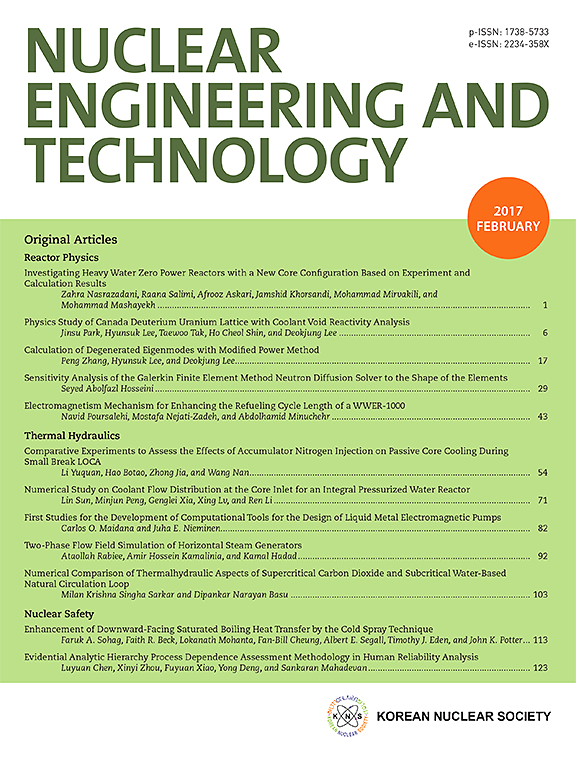Naturally-switching velocity and admittance control (NSVAC) for bilateral teleoperation in CFETR remote handling
IF 2.6
3区 工程技术
Q1 NUCLEAR SCIENCE & TECHNOLOGY
引用次数: 0
Abstract
The bilateral control method serves as the primary means of interaction for remote handling (RH) in CFETR, effectively enhancing operations performance during interaction with the environment. However, traditional control methods excessively rely on the system's inherent performance and the operator skill, making it necessary to introduce the admittance control strategy to further enhance operational safety. This paper adopts the Naturally-Switching Velocity and Admittance Control (NSVAC) method, ensuring operational safety through a combination of velocity and admittance control. In this study, an analysis was conducted on the variations in interaction forces at different positions during the RH process. When the force is below a predetermined value, velocity control was applied; otherwise, admittance control was used. In order to naturally and smooth switching between the two modes, the control law and switch function were provided. Subsequently, the system behavior using NSVAC is analyzed and the stability analysis based on passivity control theory is conducted. Finally, the effectiveness of the NSVAC method is validated through simulation and experiments. The results strongly indicate that NSVAC not only meets practical operational requirements but also effectively guarantees the safety of operations throughout the process.
CFETR遥控操作中双边遥控的自然切换速度导纳控制
双边控制方式是CFETR远程处理(RH)的主要交互方式,在与环境交互的过程中有效地提高了操作性能。然而,传统的控制方法过分依赖系统的固有性能和操作人员的技能,需要引入导纳控制策略来进一步提高运行安全性。本文采用自然切换速度导纳控制(NSVAC)方法,通过速度和导纳控制相结合来保证运行安全。在本研究中,分析了RH过程中不同位置的相互作用力的变化。当力低于预定值时,进行速度控制;否则,采用导纳控制。为了在两种模式之间自然、平稳地切换,给出了控制律和切换函数。在此基础上,对系统行为进行了分析,并基于无源控制理论进行了稳定性分析。最后,通过仿真和实验验证了该方法的有效性。结果表明,NSVAC不仅满足实际操作要求,而且有效地保证了整个操作过程的安全。
本文章由计算机程序翻译,如有差异,请以英文原文为准。
求助全文
约1分钟内获得全文
求助全文
来源期刊

Nuclear Engineering and Technology
工程技术-核科学技术
CiteScore
4.80
自引率
7.40%
发文量
431
审稿时长
3.5 months
期刊介绍:
Nuclear Engineering and Technology (NET), an international journal of the Korean Nuclear Society (KNS), publishes peer-reviewed papers on original research, ideas and developments in all areas of the field of nuclear science and technology. NET bimonthly publishes original articles, reviews, and technical notes. The journal is listed in the Science Citation Index Expanded (SCIE) of Thomson Reuters.
NET covers all fields for peaceful utilization of nuclear energy and radiation as follows:
1) Reactor Physics
2) Thermal Hydraulics
3) Nuclear Safety
4) Nuclear I&C
5) Nuclear Physics, Fusion, and Laser Technology
6) Nuclear Fuel Cycle and Radioactive Waste Management
7) Nuclear Fuel and Reactor Materials
8) Radiation Application
9) Radiation Protection
10) Nuclear Structural Analysis and Plant Management & Maintenance
11) Nuclear Policy, Economics, and Human Resource Development
 求助内容:
求助内容: 应助结果提醒方式:
应助结果提醒方式:


